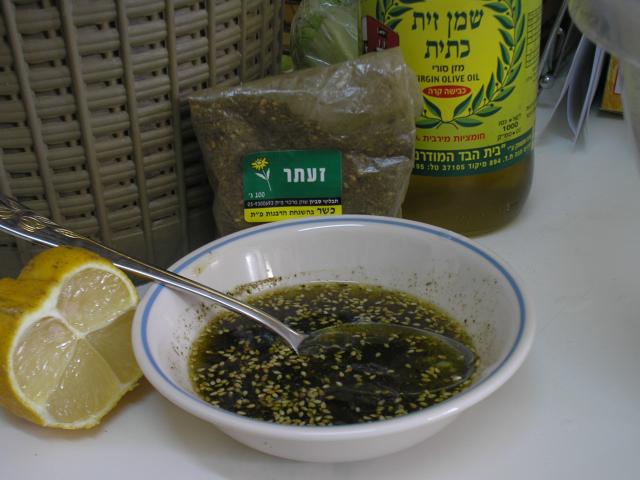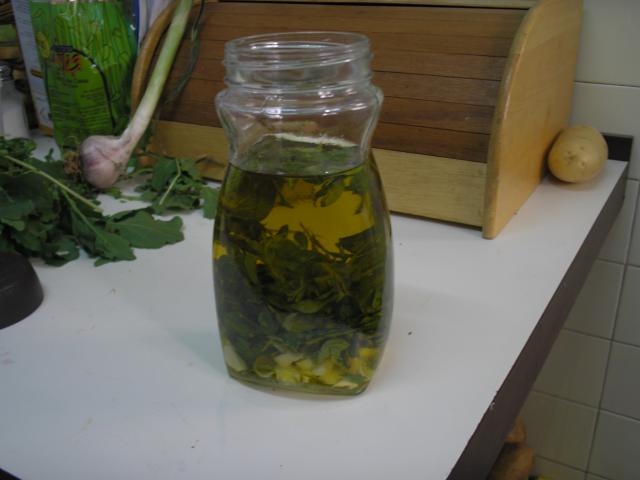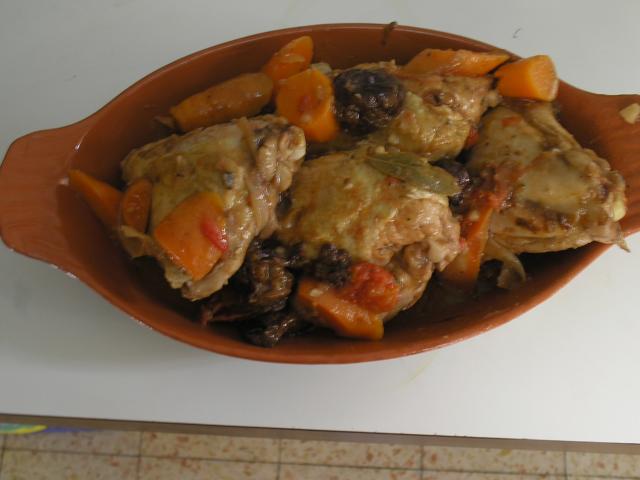-
Posts
9,607 -
Joined
-
Last visited
Content Type
Profiles
Forums
Store
Help Articles
Posts posted by Gifted Gourmet
-
-
You may find the discussion here to be of value in making your decision ... lots of cool feedback on restaurants in Carmel.
-
The mention of stoemp under Brussels intrigued me. Never heard of it, but sounded kinda like champ, the Irish mash, a recipe for which I've saved from a Corby Kummer article in the Atlantic Monthly and make occasionally.
this particular recipe does indeed sound like "mash" ...
Stoemp Aux Poireaux/Stoemp Met Prei - Belgian Mashed PotatoesThis is a version of a dish I first had in Brussels. I think it is a traditional Flemish working person's dish, and goes really well with Carbonnades de Boeuf or Waterzooi. It is also sometimes cooked with ham as well. You can use light chicken stock in place of the vege stock if you prefer.
Stoemp with Caramelized Onions looks fantastic! I am planning to try it myself!
-
interesting background on gullah cooking, origins, etc. This is from Savannah Online:
THROUGH WARS, BONDAGE AND THE progression of time, the imprint of West Africa remains on the Gullah people of the Lowcountry and coastal areas of South Carolina and Georgia. Keeping with the flavors of the African West Coast’s ways in food is a key part of the Gullah lifestyle. Gullah (pronounced GULL-lah) and also known as Geechee in northern Georgia, is a word used for both the native islanders and the language they speak. Also, Gullah cooking relies strongly on oysters, shrimp and fish. The Native Islander Gullah Celebration, is generally held on Hilton Head Island throughout FebruaryThis is the best website I have seen yet on gullah culture .. it has a ton of information, presented in an extremely interesting fashion .. check out the links for more knowledge ...
-
Hmmmm... how 'bout just throwing some celery seed in a coffee grinder (rinse well before the next morning's coffee...
 ), pour through a strainer, into a typically bland, flavorless, modern "Ginger Ale" (like Canada Dry's
), pour through a strainer, into a typically bland, flavorless, modern "Ginger Ale" (like Canada Dry's  or even "Vernors"
or even "Vernors"  which sure has lost a lot since the purchase by CS).
which sure has lost a lot since the purchase by CS).Thanks for 'feeling our pain' and offering us an entirely viable solution!
I will, of course, continue to search for a resolution to the "Rumor or Reality?" situation in which we find ourselves ...
-
Carlsbad and MaxH, I appreciate your filling in the gaps in my knowledge about this seasoned writer and food afficianado, Doris Muscatine ... She seems to have been quite a worthy 'precursor' to many of the California food writers whom we read so voraciously today.
-
With all due respect, there has got to be something TERRIBLY wrong about such a list that does not include Paris.
That was my initial impression as well ... boggles the mind ... of all of the eating cities in the world, surely Paris ought to lead the list ... but they chose to select Lyon, which is fine ... but ...
-
Hi Probono,
Is this the place?information source is here
Ultimate Eating
Phone: (843) 838-1314
Fax: (843) 838-2998 PO Box 849
St. Helena Island, SC 29920
Serving three meals a day of lowcountry and gullah cooking.
-
Miriam Kresh's images from her dinner:

Za'atar: Great dip for slices of challah: garlic, salt, za'atar herb with toasted sesame seeds, and a squeeze of lemon juice.

During these weeks, fresh garlic is available by the ton. I buy about 9 kilos every spring and it lasts all year (taking into account that about 10 months from now some will have spoiled). Since fresh oregano is on the market, too, I love to make this oregano- and fresh garlic-infused olive oil, which becomes the base for vinaigrette.

chicken stewed with carrots, sweet potatoes and prunes
First the chicken pieces were sauteed in olive oil. Small amounts of dried sage and thyme, rubbed off the stalks and crumbled, were added, with a little fresh curry powder, a dollop of soy sauce, and a good splash of red wine. Not much salt. Carrots, sweet potatoes, and prunes contributed a slight sweetness; in the end I also added a little tamarindi sauce and freshly-grated black pepper. Served with hand-made couscous, and orange mead, it was not bad.
-
WikipediaSpinnenkäse, which literally means spider cheese, more correctly called Milbenkäse (mite cheese), is a German speciality cheese ...Quark flavoured with salt and caraway is shaped into small balls or cylinders and dried. Then it is placed in a wooden box inhabited by cheese mites (Tyroglyphus casei L.) for at least three months. The excrement of the mites, which are fed with rye flour, diffuse into the cheese and cause fermentation. After one month, the cheese rind turns yellow, after three months reddish-brown. Some producers, however, allow the cheese to ripen for up to one year, until it has turned black.
Mites clinging to the cheese rind are also consumed.
anyway you look at it, it is somewhat less than appealing .. and doubtful that it could be bought in the Us since it isn't even legal in Germany ...
Spinnenkäse is not strictly legal, as the sale of foodstuffs containing living animals is forbidden in Germany; however Spinnenkäse is tolerated by the authorities for the sake of its ancient tradition.
-
we let our tastebuds wander the globe in search of sustenance. Our definitive list finds cities chosen for their unique dishes – if you hanker for snake, head to Hanoi – others for their celebrity chefs – witness Las Vegas and New York – and still others for creating dishes known the world over – we have Brussels to thank for mussels and fries and Tokyo for superlative sushi and sashimi. Of course, France and Italy are renowned for their local cuisine, so you'll find two stellar cities worth visiting here to sate your appetites......
Looking over this list, which cities would you want to add to the list?
Which cities would you want removed from the list?
Why?

-
Traditionally, timbales were the highlight of the meal. They were by and large beehive or dome shaped pastries filled with a creamy mixture of sauce, pasta, vegetables and meat. I've heard of timbales with cases made of all sorts of things: risotto, shortcrust pastry, lasagne sheets. They are almost always elaborate and time consuming. A great many of them appear to have a layered filling rather than a casserole-type filling
Say, did anyone happen see the movie "Big Night" in which two Italian brothers served a timpano for guests who were anticipated eagerly but failed to show? This reminds me of their "timpano" which was much more elaborate ... This looks relatively simple and quite stunning when done correctly.
Would you try this recipe for Beehive Pasta Timbale?
-
When choosing crackers, the exceedingly thin Finnish-style rye crackers add the most pleasant brittle contrast to the buttery fish. And don't forget the Linie aquavit.
and many more ideas on serving from this source--Open-Face Chewy Rye Bread Sandwiches. Brush the bread with leftover Scandinavian Mustard-Dill Sauce; top with thin gravlax slices; dot with sour cream; drizzle with more sauce. Garnish with dill sprigs.--Open-Face Chewy Pumpernickel Sandwiches. Spread the bread with a thin layer of unsalted butter ...
-
-
I originally made Marcus Samuelsson's Gravlax and Honey-dill-mustard Sauce but guests felt that the sauce overpowered the saltiness and delicate flavor of the gravlax ... now I serve it plain or with a soft creme fraiche which doesn't seem to obscure the flavor. I have served it on melba toast or rye bread.
-
Mrs. Muscatine began writing about food and wine in the 1960's, before anyone knew a pinot noir from a merlot or had ever heard of Alice Waters, Chez Panisse and the new American cooking. Her writing helped introduce California cooking, with its emphasis on fresh, locally grown ingredients, to the rest of the country.
"Doris was a good kind of critic, looking for the positive things," said Ms. Waters, the executive chef and owner of Chez Panisse, in Berkeley. "She was able to sort them out. She was never into the kind of superficial things about food and wine. She wanted to know about the person who ran the restaurant, its history, not just recipes. And that connects to her interest in history."
from San Francisco Gate .. more ...
Are you familiar with her writings?
-
Covenant Cabernet
thanks for this addition to the growing list here!
 Kosher. A rich, exotic, distinctive style, with aromasof ripe currant, plum and blackberry, along with an intriguing new-leather aroma that plays in the background. Shows a measure of finesse and polish on the finish, with ripe, integrated tannins. An impressive debut.
Kosher. A rich, exotic, distinctive style, with aromasof ripe currant, plum and blackberry, along with an intriguing new-leather aroma that plays in the background. Shows a measure of finesse and polish on the finish, with ripe, integrated tannins. An impressive debut.
-
But there's a long list of my family members and acquaintances that will be mourning this actively.
Dear Rabbi,
Can one properly sit shiva in a deli?
Signed,
Forlorn in Flushing
-
news posted here at BevNet.com
The news is not good today for those who cherish the soda we have all enjoyed from Dr. Brown's ... Cel-Ray ... what else can one have to wash down their corned beef sandwiches?
 I loved the exhilarating sting of carbonation, the delicate hint of vanilla and the icy, mouth-dousing sweetness. The glass bottles gave no clue as to the identity of Dr. Brown, and yet I pictured him as a kindly, white-coated man not unlike my dentist. In a pristine laboratory filled with bubbling test tubes and beakers, Dr. Brown concocted the amber elixir that washed away the saltiness of corned beef, cut the peppery after-burn of pastrami or kept me from choking on a throatful of brisket.
I loved the exhilarating sting of carbonation, the delicate hint of vanilla and the icy, mouth-dousing sweetness. The glass bottles gave no clue as to the identity of Dr. Brown, and yet I pictured him as a kindly, white-coated man not unlike my dentist. In a pristine laboratory filled with bubbling test tubes and beakers, Dr. Brown concocted the amber elixir that washed away the saltiness of corned beef, cut the peppery after-burn of pastrami or kept me from choking on a throatful of brisket.Who here joins me in mourning the passing (shortly) of this beverage, often called "Jewish Champagne"?

-
anything from either Katie Loeb or Daniel Rogov is the quintessential advice to be followed ... they know kosher wines better than anyone else I know .. follow their advice, read their writings, and enjoy the resulting Passover holiday!
ברוך אתה ײ אלהינו מלך העולם בורא פרי הגפן
Baruch atah Adonai, Elohaynu, melech ha-olam, borei p’riy ha-gafen.
Blessed are You, Lord, our God, King of the Universe, who creates the fruit of the vine.
-
but more about encouragement to get in the kitchen and try new things.
Julia makes cooking look fun, and I find her attitude infectious. Yay!
Not unlike what eGullet is doing currently, don't cha think?

So many here responded to a question I once posed about what eGullet had brought to their lives and the overwhelming response was "encouragement" ... interesting ... to me anyway. Thanks for your thoughtful input, Blanche ... Davidian .. or DuBois... for the Tennessee Williams fans ...

-
I now have a 2+2 Combi Dualit which I cannot fault, so I would go for
the Dualit based on ability, flexibility, build quality and style.
As far as I'm concerned price does equal quality.
Thank you for your personal experience with this particular toaster, Mike. I consider that a significant constructive opinion and will use it in thinking about a toaster purchase.
and I, too, have to agree that quite often price does equate with quality... that said, I also read this over again:
My criticisms may not dissuade Dualit devotees, but the toaster is not perfect, and for $320 ($220 for the two-slice), I expect perfection.
-
in the april/may 2003 issue of saveur.
Interestingly, that particular issue had an article by eG's Steven Shaw:
ReviewTwo substantial new compilations of food writing good and great serve up tastes of gastronomes from Chekhov to Beard. By Steven A. Shaw
I am willing to risk trying this recipe:from Jewish Food.com
 adapt, schmadapt ... looks fine to me!
adapt, schmadapt ... looks fine to me! 
-
You can add a link though!! Please!

-
interesting piece from Jennifer Rosen
Kosher wine review has some ideas as well ...
Passover 2006 reviews here as well
Today, the same grapes that go into the better Bordeaux and Rhone offerings from France, and the equally improved California varieties – cabernet sauvignon, merlot, grenache, syrah, zinfandel, mourvedre, sauvignon blanc, chardonnay – go into wines vinified, aged, blended and bottled under Kosher conditions. Wine is made in Israel, of course, and there are vineyards on the Golan Heights.



The winemaker is the palate of a winery's brand
in Wine
Posted
from Wine Business
Ever think of a career in the wine business?
I found this report/survey most interesting, especially the charts which show everything itemized ...